This Artist Makes Gorgeous Weavings Using Wildflowers—and You Can, too!
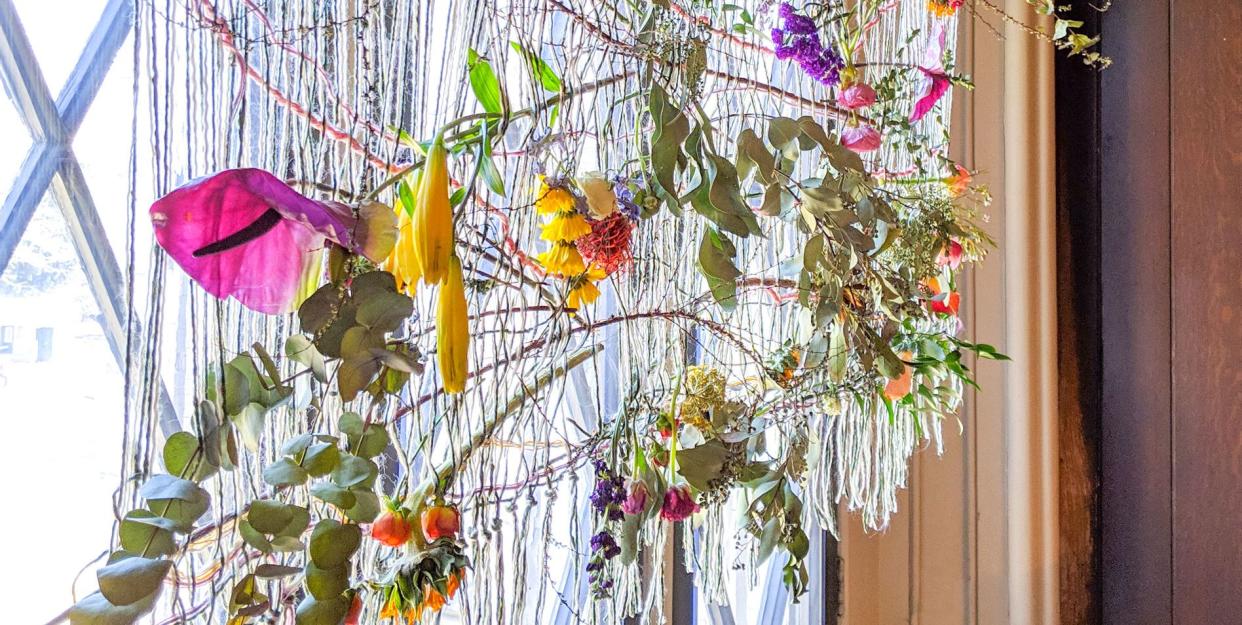
While Whitney Crutchfield's latest endeavor might be a break from the work she's done for most of her life, it's really a return to something she-and many of us-loved much earlier in our lives. "When I was little I always loved making flower crowns," recalls the Brookyln-based founder of weaving studio We Gather. After years of working with all types of textiles and fibers, Crutchfield has recently added a new material to her arsenal: flowers. For the past year, in addition to teaching more traditional weaving classes, Crutchfield has developed a new take on a floral arrangement-intricate, colorful weavings of various foraged and rescued flowers.
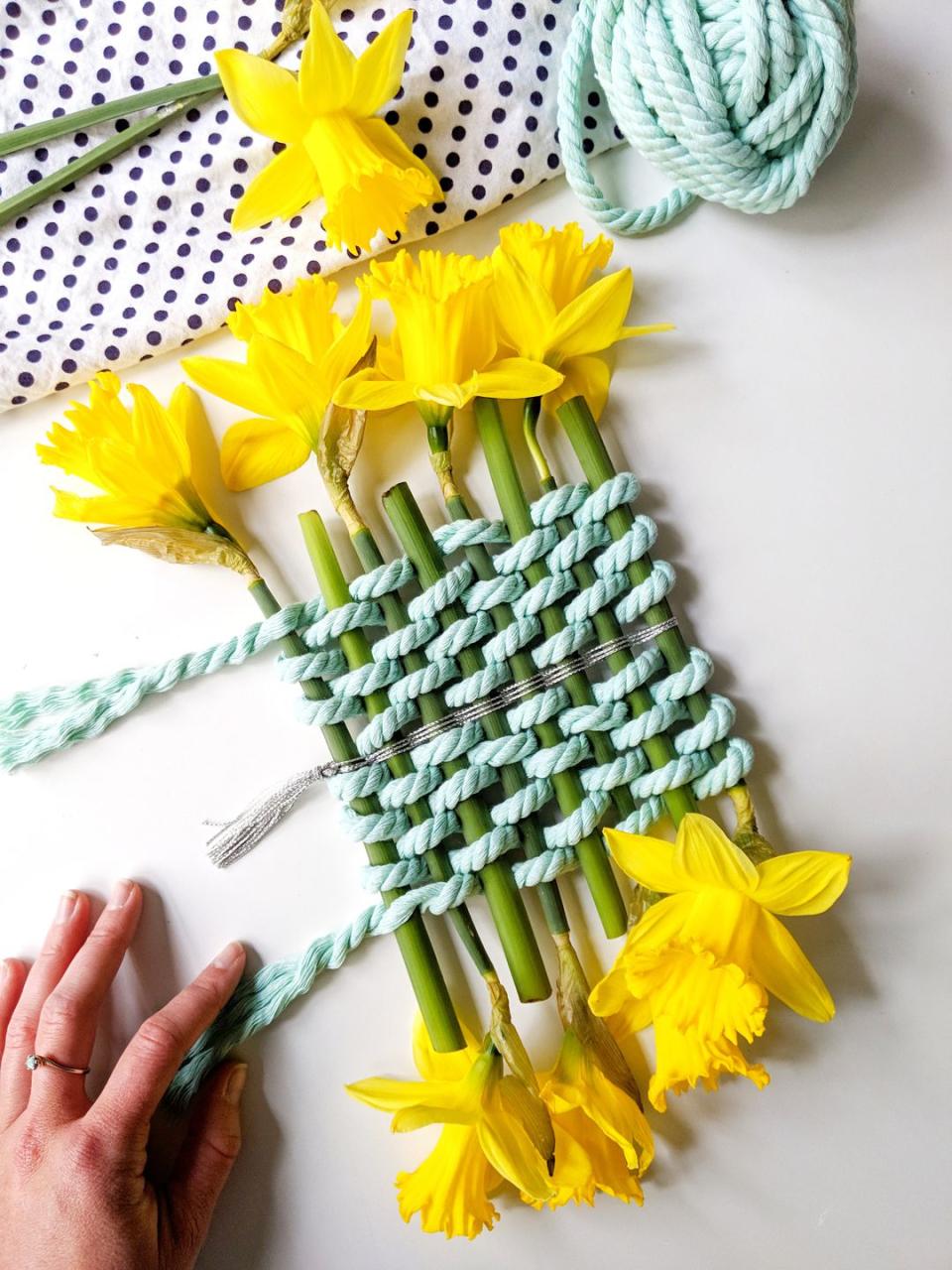
The idea began a little over a year ago, when a friend of Crutchfield's wanted to involve her in an event at Swale, a floating, forage-able barge at Brooklyn's army terminal. "One thought was we could do natural dyeing but that’s not really my expertise," Crutchfield says (though she does dye her own yarns at We Gather's Industry city studio). "So I thought, we could weave with plants."
She's quick to point out that she's hardly the first to come up with the idea. "People have been doing it for 20,000 years," she explains. "I mean, that’s the original way to weave, if you think about baskets that are made with grass." But, after doing some research, she found there wasn't anyone attempting this technique in a fresh, contemporary way.
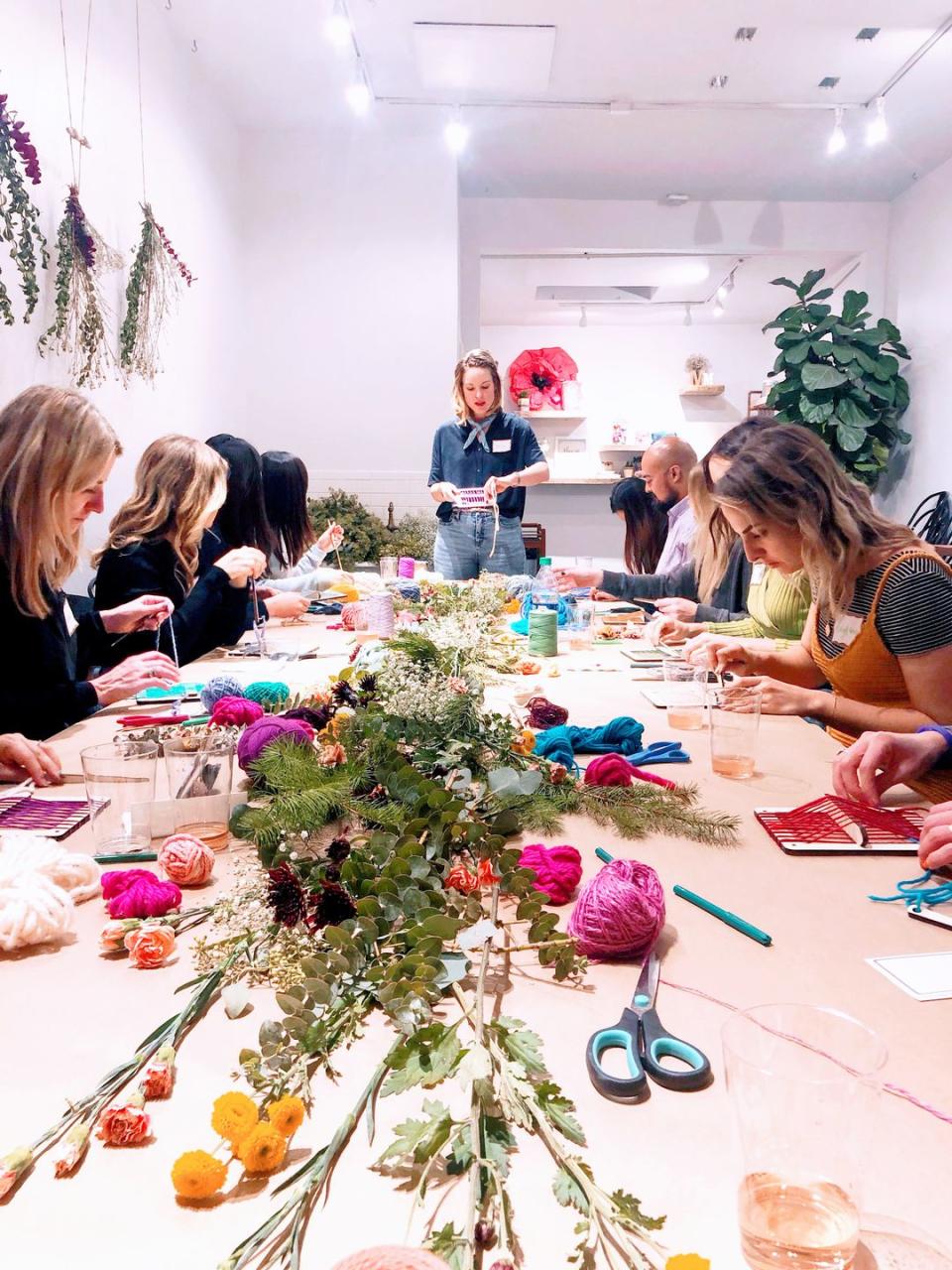
After some experimentation with different types of plants and quite a few trial runs, Crutchfield began teaching wildflower weaving classes, eventually developing a small scale loom for the purpose (these will soon be available for sale on her website). The result is gorgeous, intricate weavings that preserve flowers in fresh, new ways.
She's found that the living nature of the material makes people approach it in a differnt way: "One thing I’ve noticed teaching weaving is a lot of time adults are really intimidated by doing a scale perfectly. If you tell them that was they’re doing is never going to be the same, they just have to kind of let go."
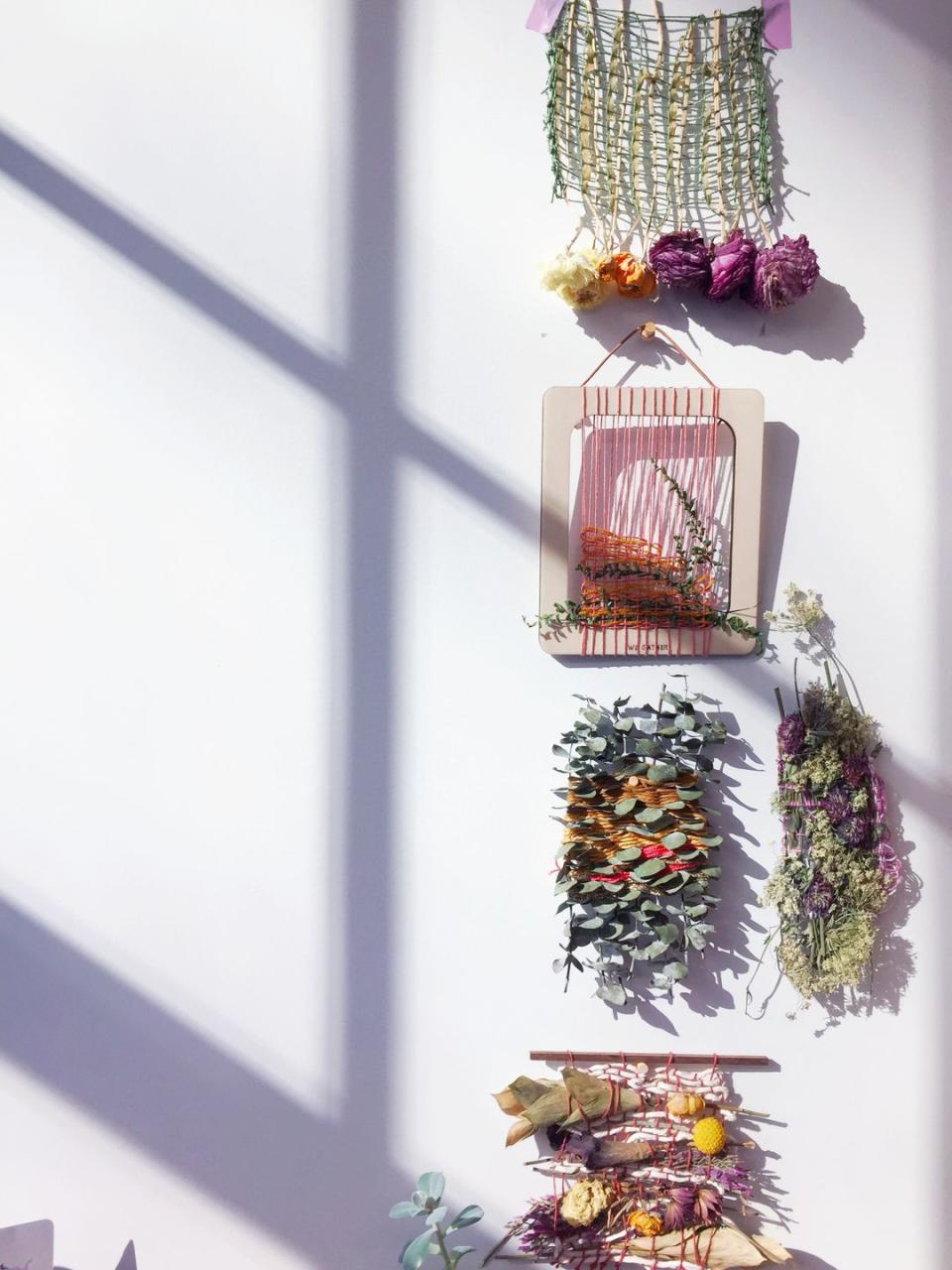
Though they won't stay the same, the flowers Crutchfield selects tend to dry well, making the weavings much longer lasting than a traditional cut bouquet (an important factor, since she's conscious of remaining as low-waste as possible). "I tell people to dry them upside down if they can," Crutchfield advises.
So which flowers work best? Among Crutchfield's favorites are more hearty greens like eucalyptus ("which you could weave and hang in your bathroom for the smell," she suggests), grasses, Queen Anne's lace, calla lilies, statice, ranunculus, and Anthurium-which Crutchfield recently used for a large-scale installation at the flower show at Lyndhurst mansion in Westchester, New York.
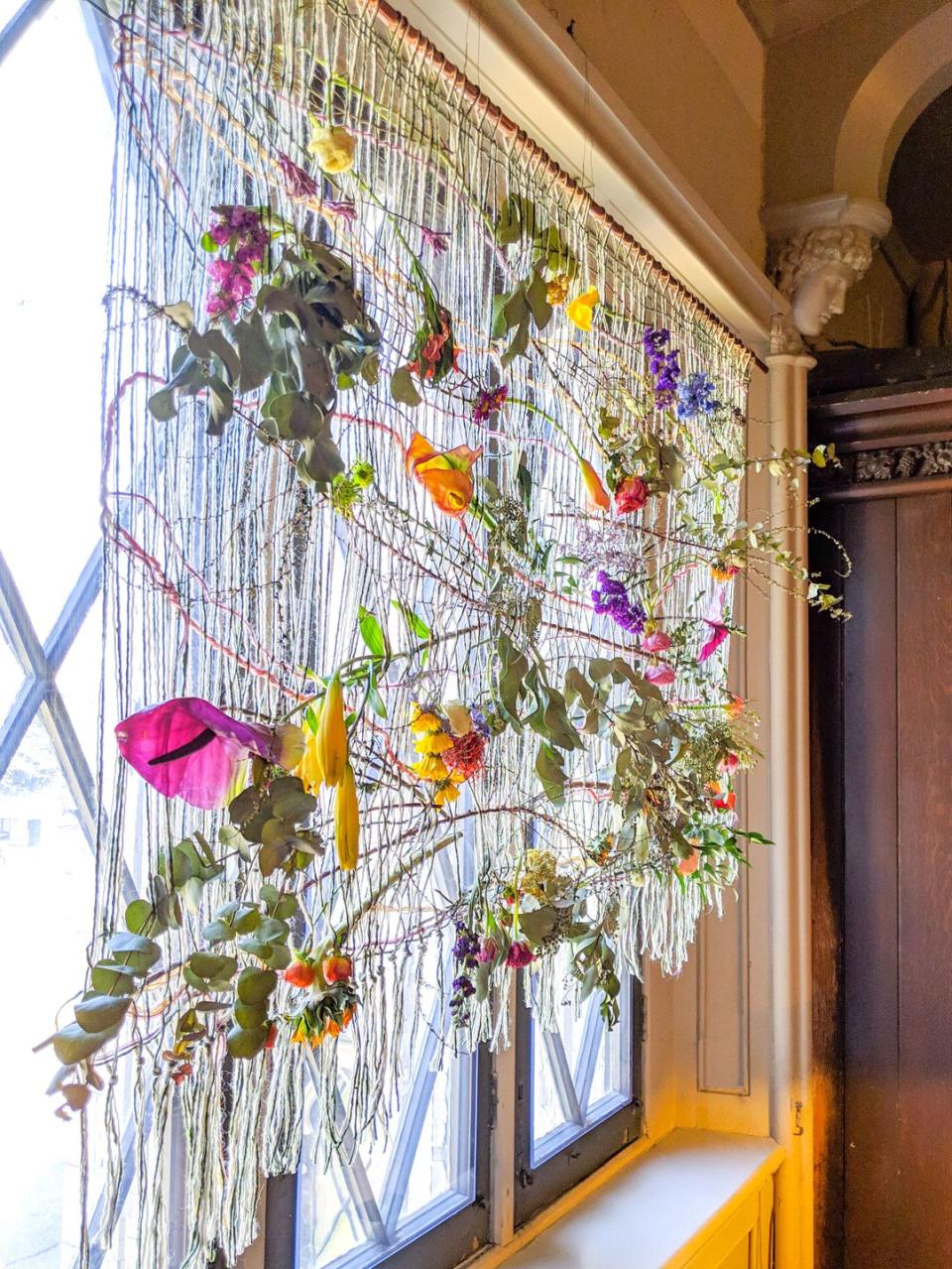
She forages for her own plants where she can ("any of what I call 'ditch plants,'" she laughs, "things by the side of the road, like grasses or cat tails.") and partners with florists to take their leftovers. One fruitful dumpster dive in the flower district provided some of her first flowers. "I went to the flower market last spring when I was testing it out and I walked by this guy who was putting some of the old bouquets in the trash," she recalls. "I said, 'Are you just throwing them away?' He said, 'yeah,' so I said 'I’m doing an art project, do you mind if I take these?' and he just gave me a ton of ranunculus."
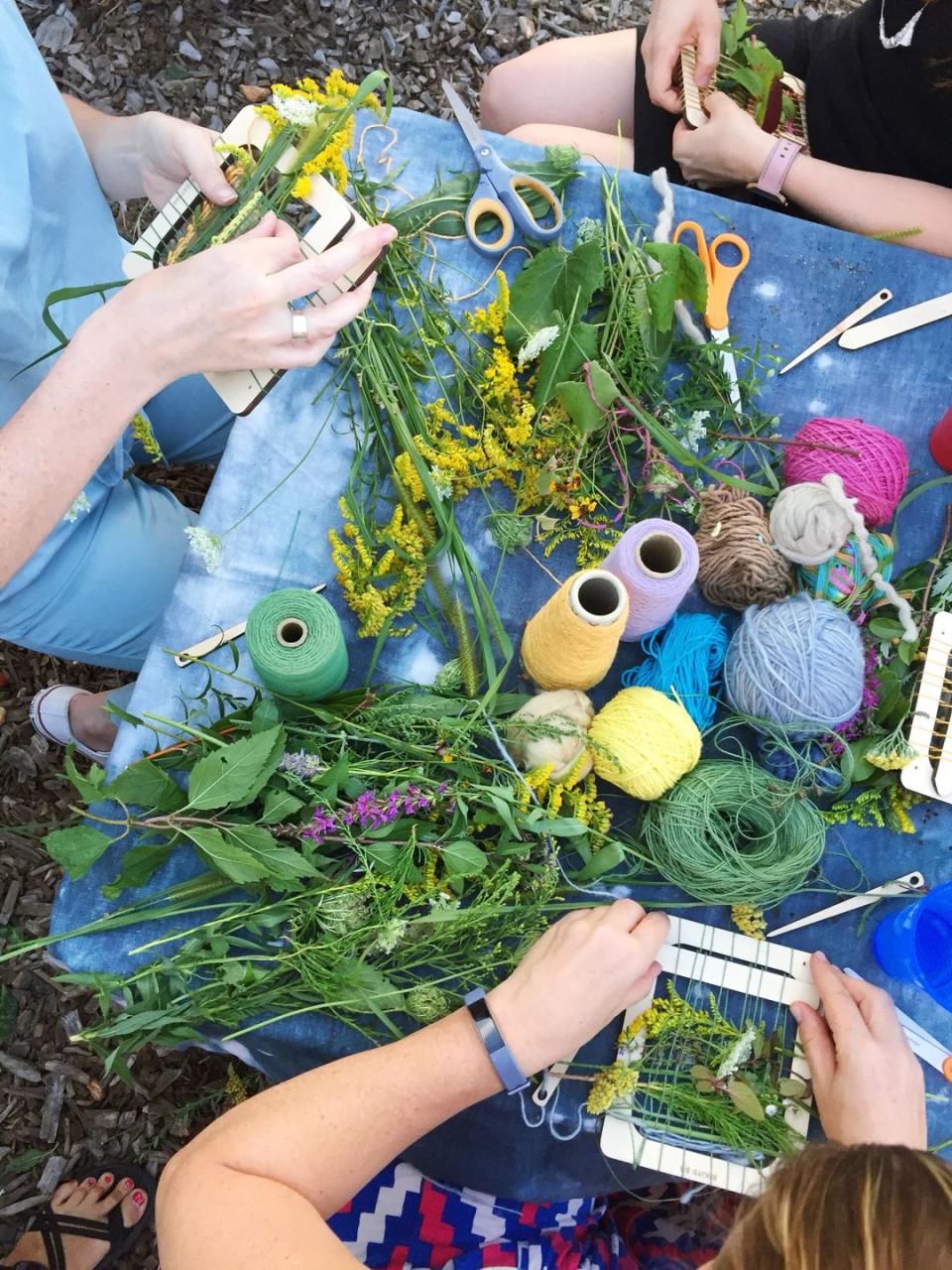
She's also worked with the florist Stems Brooklyn, and picks up leftovers from the Trader Joe's on Court Street. As she sees it, the project is a way of turning what is essentially trash into a thing of beauty. "I didn’t want to create more waste in the world," she explains. "It’s not like weaving has any use or value, exactly, it's something that is made for its beauty and for the meditative process to create it."
Want to learn to make your own wildflower weaving? Sign up for one of Crutchfield's workshops here or contact her about a private workshop.
Follow House Beautiful on Instagram.
('You Might Also Like',)

